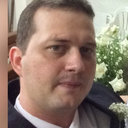Impaired gas exchange: accuracy of defining characteristics in children with acute respiratory infection.
Keywords
Abstract
OBJECTIVE
to analyze the accuracy of the defining characteristics of the Impaired gas exchange nursing diagnosis in children with acute respiratory infection.
METHODS
open prospective cohort study conducted with 136 children monitored for a consecutive period of at least six days and not more than ten days. An instrument based on the defining characteristics of the Impaired gas exchange diagnosis and on literature addressing pulmonary assessment was used to collect data. The accuracy means of all the defining characteristics under study were computed.
RESULTS
the Impaired gas exchange diagnosis was present in 42.6% of the children in the first assessment. Hypoxemia was the characteristic that presented the best measures of accuracy. Abnormal breathing presented high sensitivity, while restlessness, cyanosis, and abnormal skin color showed high specificity. All the characteristics presented negative predictive values of 70% and cyanosis stood out by its high positive predictive value.
CONCLUSIONS
hypoxemia was the defining characteristic that presented the best predictive ability to determine Impaired gas exchange. Studies of this nature enable nurses to minimize variability in clinical situations presented by the patient and to identify more precisely the nursing diagnosis that represents the patient's true clinical condition.



